Many of us dream of travelling the world, but there’s one universal truth about flying that often puts a damper on the experience: airplane food. Despite the excitement of jetting off to your dream destination, there’s one thing that seems to universally disappoint: those bland, uninspiring meals served on the plane. But why does airplane food get such a bad reputation? Well, experts have an answer, and it goes beyond the quality of the ingredients.
Also read: Airplane Travel Side Effects: What Happens to Your Body at 30,000 Feet
1. Altitude Affects Your Taste Buds
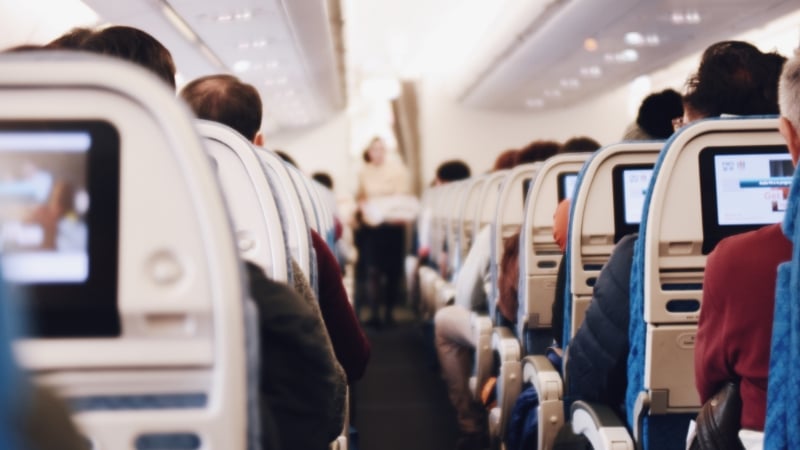
Image credit: StockSnap via Pixabay
One of the key reasons why food tastes different (or downright bland) on planes has to do with the reduced pressure in the aircraft. According to studies, the lower air pressure and reduced oxygen levels that occur at cruising altitude significantly impact our sense of taste and smell. At high altitudes, your taste buds become less sensitive to salty and sweet flavours, which can make food seem flavourless or flat.
In fact, experts have concluded that our sensitivity to sweet and salty food drops by up to 30% in the air. This is one reason why that bland chicken or pasta on your tray seems even more lacklustre than usual. On the flip side, the umami flavour, which is often associated with savoury foods, is actually enhanced during flight, although it doesn’t always help with the overall taste.
2. The Nature of the Food Preparation
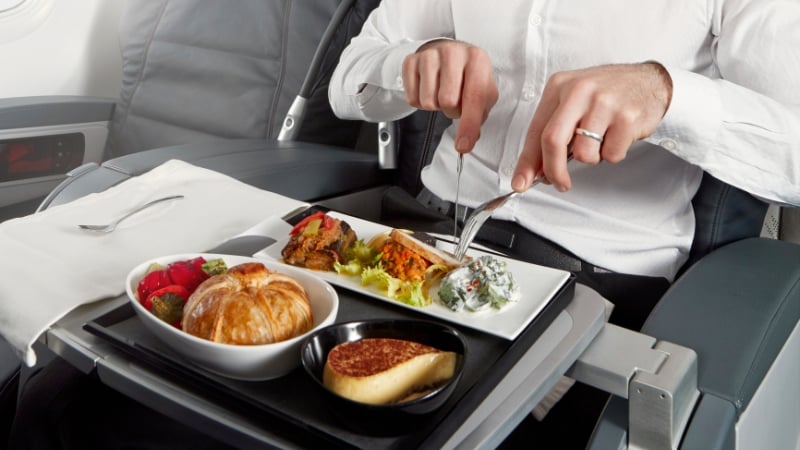
Image credit: Gerenme via Getty Images Signature
Airlines have to prioritise safety and consistency when it comes to food preparation, which is another reason why airplane meals often taste bland. To prevent any risk of food-borne illness, meals are often overcooked to ensure they’re safe to eat. The food is also prepared well in advance of the flight, then chilled, stored, and reheated once on board, which can affect both taste and texture.
The ingredients used for airline meals are typically chosen to be universally liked, so common options like chicken, pasta, and beef are often featured. Spicy or more complex flavours are avoided due to the variety of passengers onboard, as some people might not tolerate strong or spicy foods well, especially in the confined space of an aircraft.
3. Airline Kitchens Face Logistical Challenges
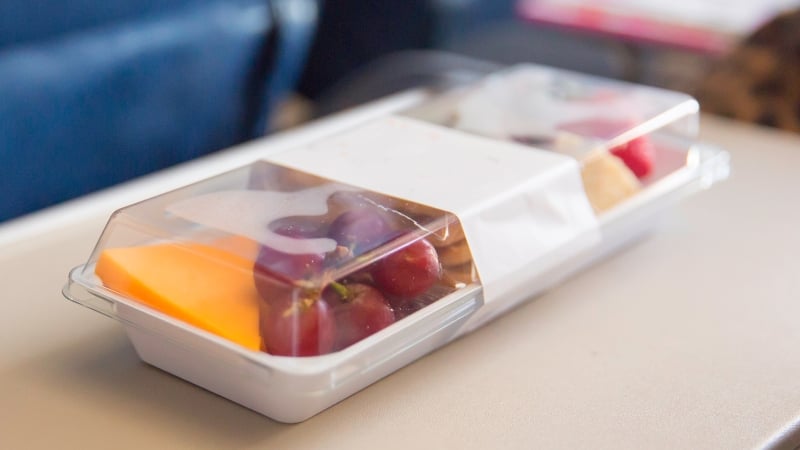
Image credit: JodiJacobson via Getty Images Signature
Creating meals for thousands of passengers across hundreds of flights involves a complex and highly regulated process. Many airlines rely on large-scale catering companies to prepare meals in bulk, but transporting and storing those meals can cause flavour degradation. Hot food is kept warm using insulated containers, while cold food is stored in coolers, both of which can impact the texture and freshness by the time they reach your tray.
It’s also important to consider the extreme conditions during air travel. The pressure differences, constant motion of the aircraft, and temperature fluctuations can all affect how food tastes once it’s served. Meals are often made to withstand these conditions, but that doesn’t always equate to fresh, delicious dishes.
Also read: How to Stay Comfortable on Long Flights: 6 In-Seat Exercises for Sore Muscles
4. Increased Salt and Sugar to Compensate
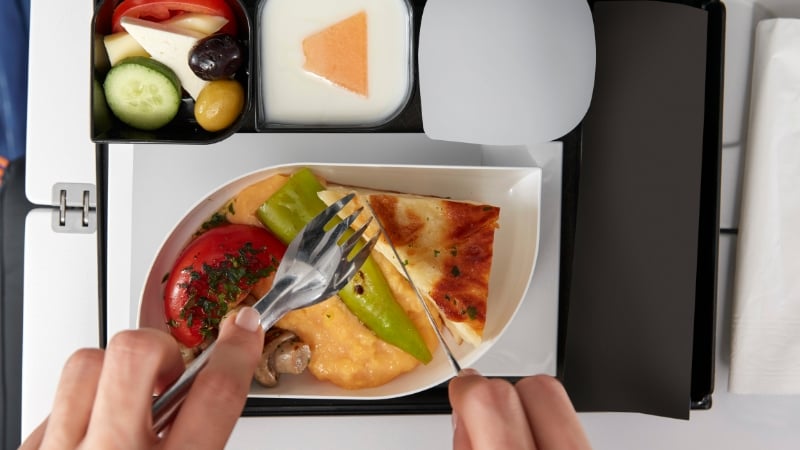
Image credit: Gerenme via Getty Images Signature
To counteract the reduced ability to taste certain flavours at high altitudes, airlines often load up on extra salt and sugar. This helps boost the taste of food, making it more palatable to passengers. While this might make the food a bit more exciting, it also means that the food can be far saltier or sweeter than what you’d typically find in a restaurant or at home. It’s all about enhancing the flavour so it doesn’t fall flat at 10,000 metres.
Interestingly, this adjustment is not only about taste. The textures of the food need to compensate for the lack of sensitivity, so meals are often prepared with added textures like sauces, gravies, or ice to create a more satisfying sensory experience.
5. The Impact of Meal Timing
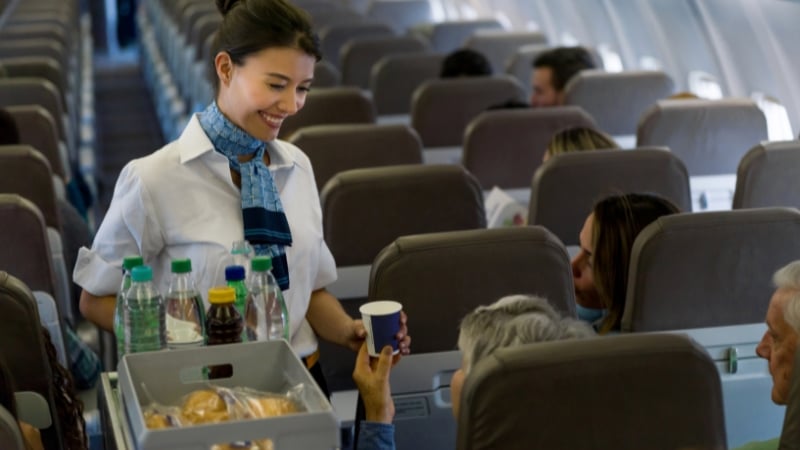
Image credit: Hispanolistic via Getty Images Signature
The timing of the meal service also plays a role in how food is perceived. Meals served on flights are often at inconvenient times, such as in the middle of the night or during odd hours. This can affect your appetite and make the meal feel less satisfying, as your body might not be in the mood for eating at that particular time.
Plus, with so many passengers on long-haul flights, meals are often served quickly and in bulk, further reducing the attention to detail that you’d find in a restaurant. The result? A rushed meal experience that leaves much to be desired.
Is There Any Hope for Airplane Food?
We’ve all been there: dreaming of a delicious meal while flying to an exciting destination, only to be let down by the bland, rubbery offering in front of us. While airplane food will never be on par with a Michelin-starred meal, the factors of altitude, preparation logistics, and sensory dulling are at the heart of the issue. So, while there’s no quick fix for this age-old problem, next time you’re in the air, consider packing some snacks to complement your meal or indulge in that chocolate bar for a little extra satisfaction.
In the end, we might just have to accept that while we can fly to the ends of the earth, the quest for exceptional airplane food might remain firmly grounded.
Also read: Why Airplane Windows Are Round (And Why We Should Thank Them)




